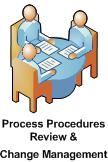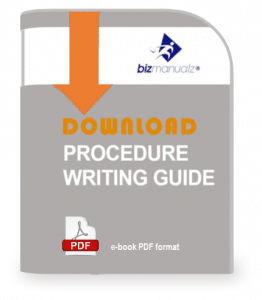How Do You Edit and Proofread a Technical Document?

The answer to this question is very obvious and pretty clear: every writing needs editing. However, technical content indeed has specific business writing skills. How do you edit and proofread a technical document? Read on to find out more.
How to Proofread and Edit Technical Content
Editing and proofreading of technical content have their specifics. You can’t just provide your text for publication or submit your essay if you haven’t checked it for mistakes. Moreover, these mistakes come in different ways, especially when it comes to technical content.
That is why it’s really important to proofread and edit every text, using well-established rules for this. If you are not sure that you can do all this seamlessly, there is always a way. You can request essay writing help from professionals and they will do everything to improve your technical writing.
Such companies are not limited to essay writing only. They usually provide high-quality editing and proofreading as well. But first, let’s start by determining what the difference between editing and proofreading is.
Editing & Proofreading: What’s the Difference
Editing and proofreading are terms that are often used interchangeably. However, there is a difference, and this difference is in the logic of the process. One should start with editing, first checking the first draft of the technical document and then addressing the main rules of academic writing.
Editing
Editing has the goal of enhancing the language of the text. It usually requires some big changes to the sentence structure and the general structure to achieve greater readability and clarity.
Proofreading
Proofreading, however, is a different process. Compared to editing, it is a gentle touch. The goal of proofreading is to make the text ready for submission by fixing small mistakes. These are typos, formatting errors, etc.
In other words, editing is a process of a deep redesign of the text according to the general rules of academic writing. Proofreading mostly serves to handle surface-level issues.
What Makes Editing & Proofreading of Technical Content Different?
Editing and proofreading technical content require editors and proofreaders to be pros not only in writing but in the subject area as well. In other words, a person with a degree in English Literature can edit a text on History. However, they can hardly do anything when it comes to technical content, for that you should use a technical writer.
This is one of the most obvious things about technical editing and proofreading. However, there are also other differences that you should be aware of before you start the process.
Technical Editing & Proofreading Requires Mastery of the English Language
A person with a modest knowledge of English cannot edit and proofread texts so complex as technical writing. In addition to the knowledge of the topic, a proofreader and an editor must know linguistics very well. That is what makes editing & proofreading so difficult when it comes to technical texts.
Technical Editors Work for a Particular Purpose
Technical editing & proofreading requires a clear purpose of the draft, review, and approval process. Editors and proofreaders should know what they are doing and what the final goal is. If they are aware of all the details, they will be able to analyze the audience and ensure the content is clear for everyone who reads it.
Tech Editing & Proofreading Depends on the Style of Writing
If one needs to edit and proofread your text, they must be aware of the standards and expectations associated with every style. A style means that for every manual, guidance, and software guide, there are certain peculiarities. If they are not analyzed and taken into account during the editing process, it can hinder the technical nature of writing.
Technical Editing Requires Confidence
Only a person with confidence in their knowledge and skills in technical writing can edit complex texts of technical nature. We don’t only talk about typos or punctuation here.
In fact, what we try to convey is logical mistakes. They are hard to spot. Yet, as soon as they are identified, an editor should have confidence in their abilities to fix them.
Technical Editing & Proofreading Requires Time
There are a few levels of editing and proofreading of technical texts. First, an document editor should assess the general logic of the text and fix logical mistakes. Secondly, editing should be done on the paragraph level. Every text should be reviewed paragraph by paragraph, section by section.
The last stage is a sentence. Each sentence should be checked for correctness. However, one must be critical in terms of the value-added by every sentence. The goal of editing and proofreading, in this case, is to prevent meaningless sentences from flooding your writing with unnecessary information.
Electronic Means of Editing
Electronic grammar checkers and spell checkers are not foreign to technical editing. It’s still recommended to use them to spot those mistakes which were left behind by a human editor. Even if an editor goes section by section, sentence by sentence, there is still a chance that some serious mistakes will be missed.
Electronic means help prevent this. After all, if you have a chance of fixing all of the mistakes by using AI tools, why not use them?
Proofread and Edit Technical Content

Procedure Review
Technical document editing and proofreading are really on the top level of writing mastery. It’s not easy to combine everything in one person: technical knowledge, linguistic mastery, and an interest in editing & proofreading.
However, some companies do have staff for this job. They hunt for professionals like this and try to retain them by all means. Of course, this logically means that good technical writing services can’t be cheap.
Nonetheless, if you have decided to hire a professional, do it. But be careful and choose someone reliable rather than look for a price ratio. After all, it’s your paper and your writing reputation which are at stake if your text is not up to top standards.
Tips From Mark Bradford of EssayHub
















Voice certainly is important. Easy to read is critical. You are presenting information someone will use. Learning to do something, have information on a product, data required to make decisions—all residing to put that information into a good structure and written in a way for ease of understanding. Active voice, accurate punctuation, shorter sentences all contribute to this. You are an advocate for your reader. Use tools to analyze the readability—there are plenty out there. Get to the point, be economical with your words. All this makes your voice clear.
When writing a technical document, it is important to proofread the document before sending it out. The technical document should be written in an easy-to-read style and grammar should be correct.
Technical documents are usually written with a more formal tone than most other types of written work. This means that the writer’s voice is not as important, and the subject matter is more essential.